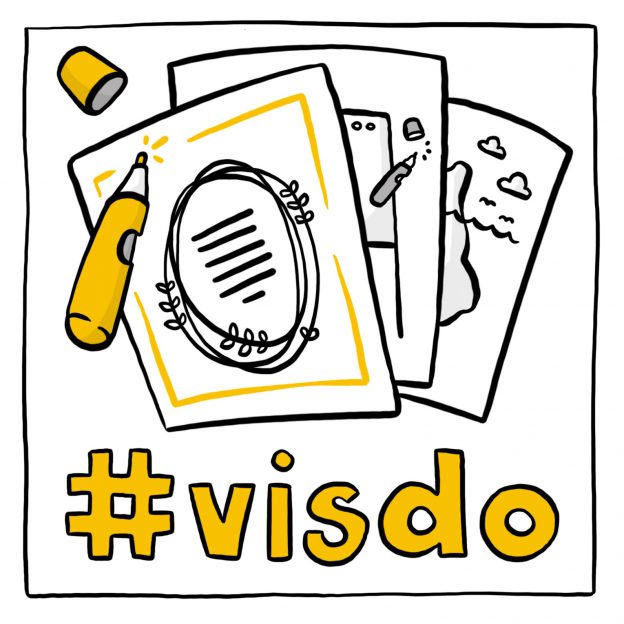
Collecting feedback with visual aids
Feedback is part of almost every seminar and workshop. Either to round off a topic, to give feedback on (group) presentations or to let the participants have their say again at the end of the event and ask them how they liked it and what they will take with them into practice. Since feedback is so often used as a method, it makes sense to consider templates that you can use for it.
And it is best to have more than one option in your toolbox, because depending on the group and the topic, you may need different approaches. In this #visdo you will therefore find three examples of feedback flipcharts from practice, each with step-by-step instructions for drawing. So you are well prepared for your next assignment.
The pond
Here, a playful framework is provided to give positive feedback and suggestions for improvement. The feedback is written on moderation cards (one card each for what was liked and one for suggestions for improvement) and then either pinned (on a pinboard), taped (to the flipchart) or placed on the flipchart (if the flipchart is on the floor in the middle of the circle of chairs).
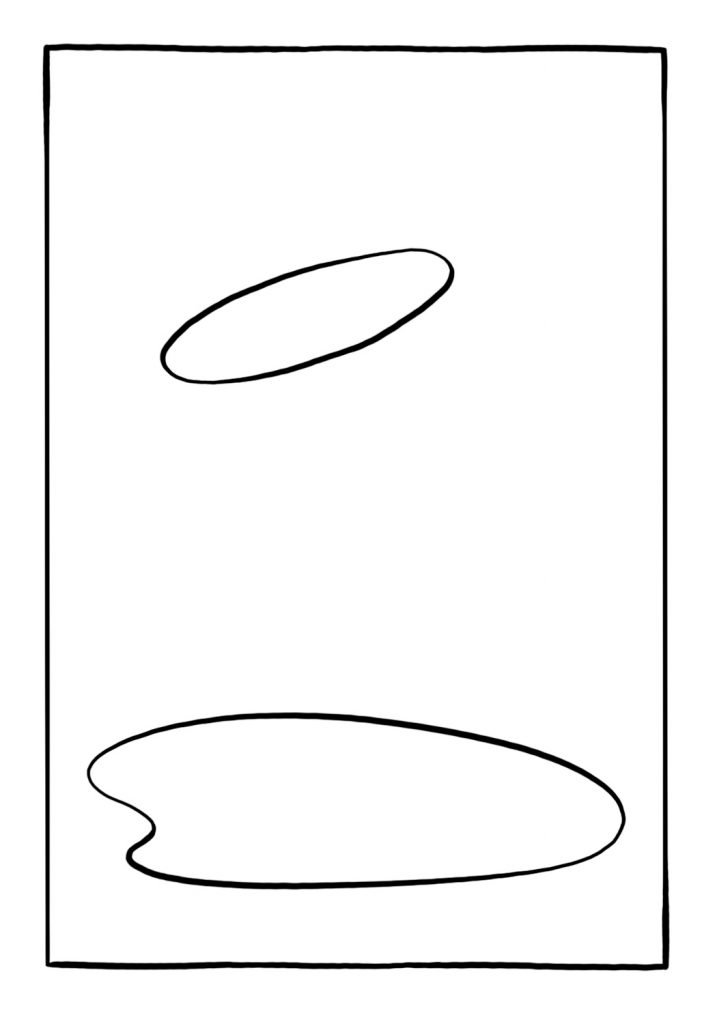
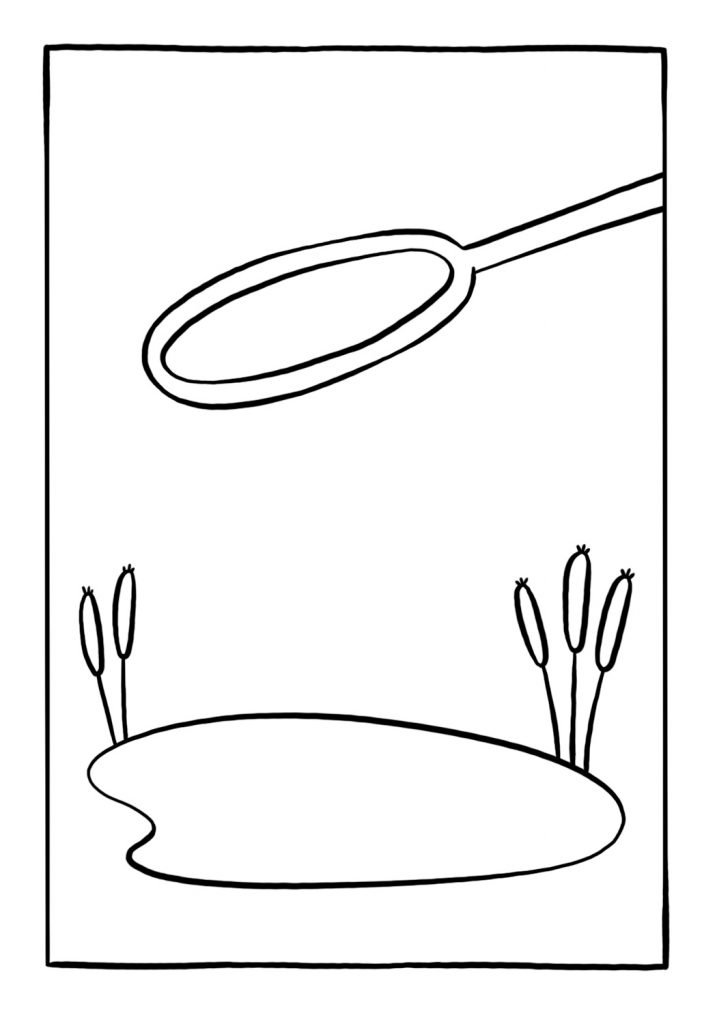
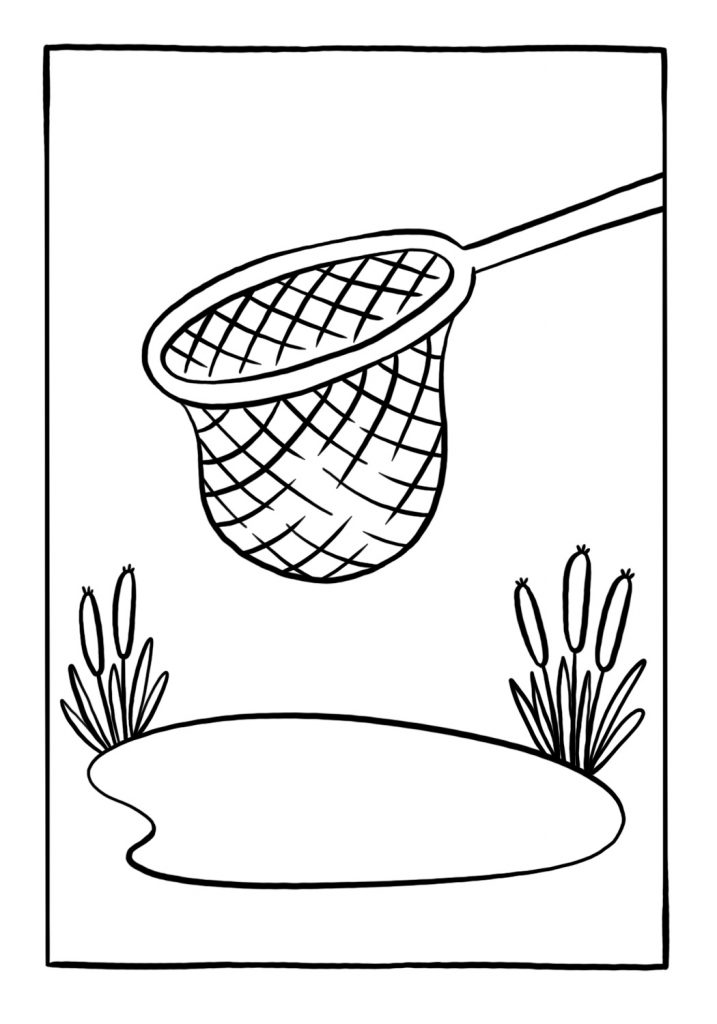
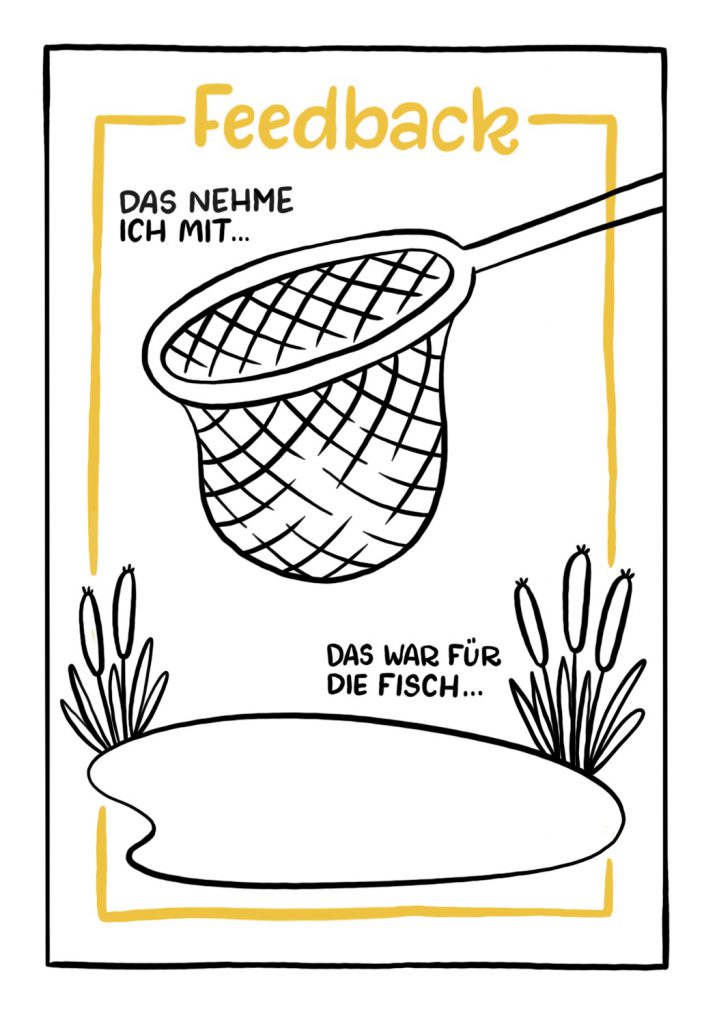
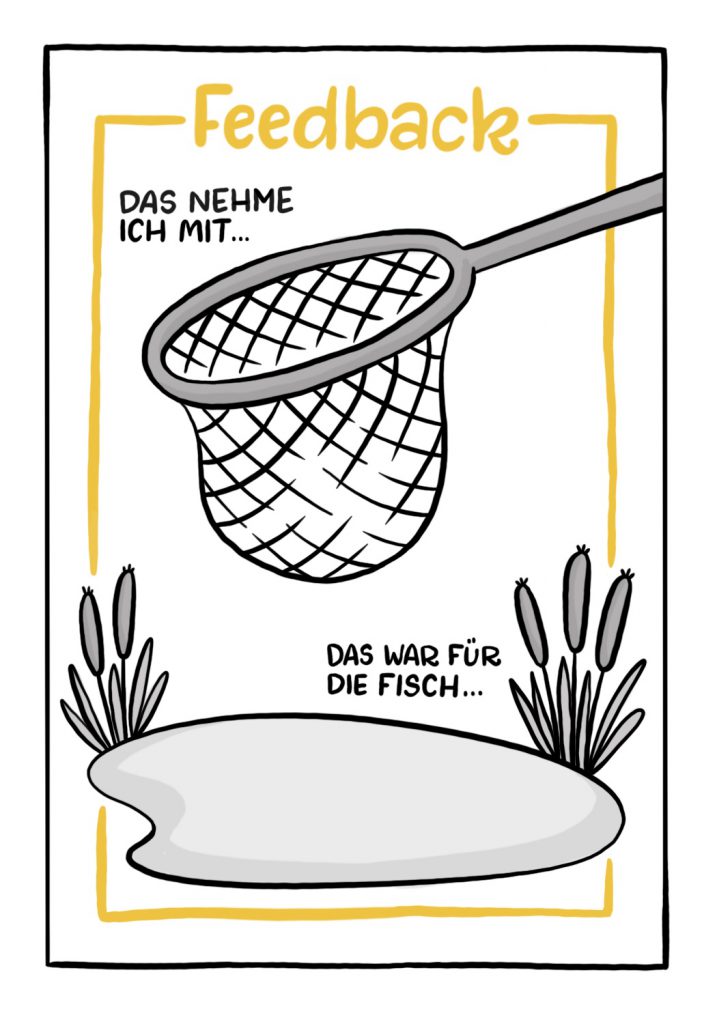
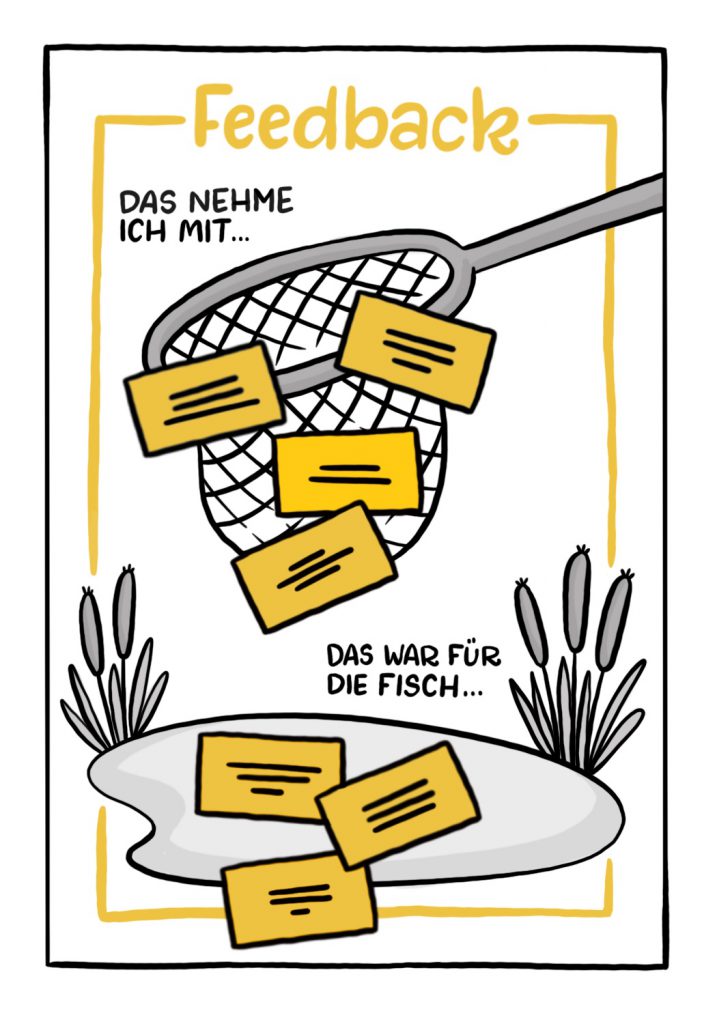
If you want to go the extra mile, you can turn the moderation cards on which the participants write their feedback into fish: just round off two corners and cut out two triangles at the other end. With large groups, you can also have the group cut the cards themselves (important: pack enough scissors) – this is a good loosening-up exercise and at the same time a cliffhanger, for example, if you do it after the lunch break and do not yet reveal what the fish will be used for at the end.
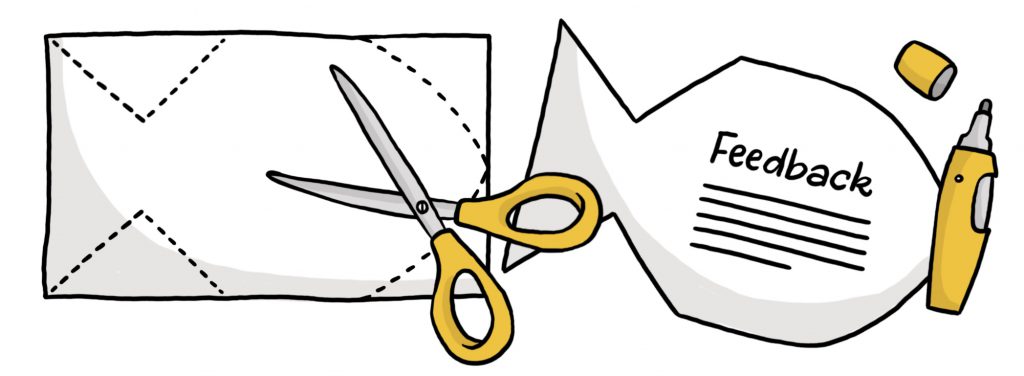
The head from four angles
This template is particularly versatile because the four icons can be easily changed to reflect different aspects. Whichever icons you choose, the idea is that participants give feedback on each category (verbally or in writing on moderation cards). In this example, I have chosen the following (neutral and therefore versatile) icons:
- Thought bubble: What do I think about the topic?
- Ear: What have I heard about the topic?
- Speech bubble: What have I already said about the topic myself?
- Heart: How am I feeling emotionally about the topic?
If necessary, the head in the middle can be made gender-neutral by leaving out the hair.
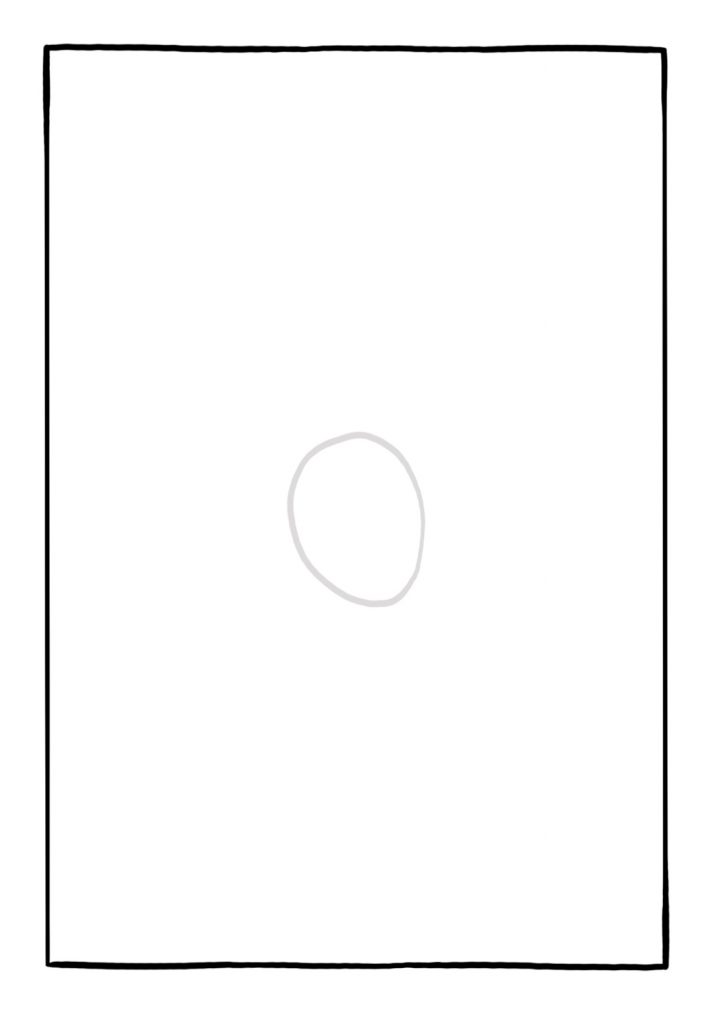
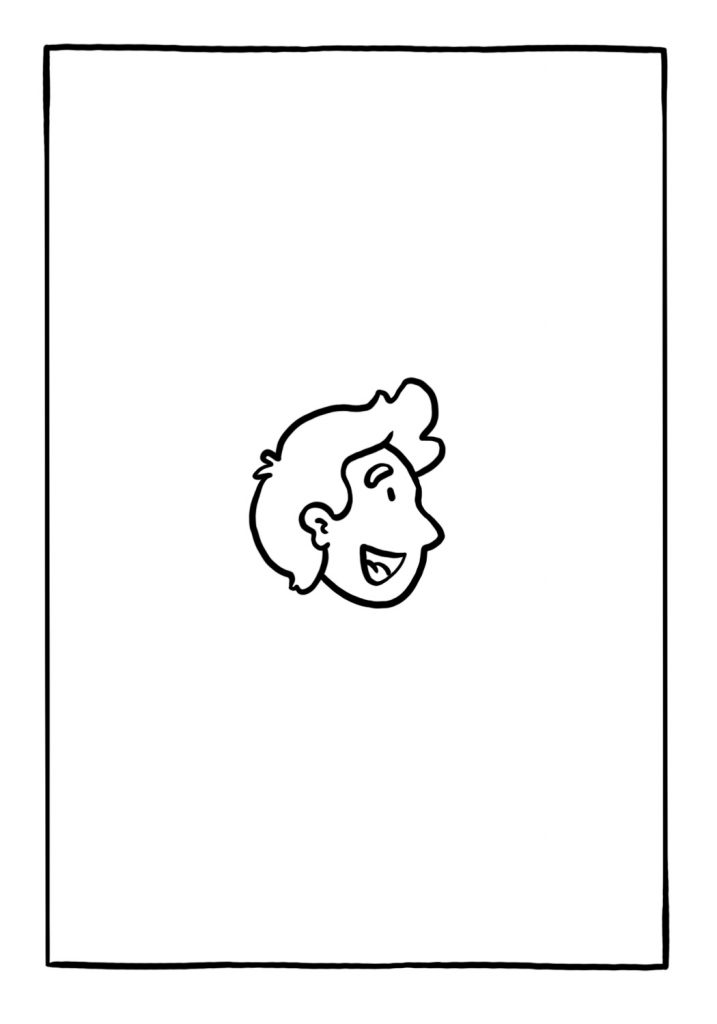
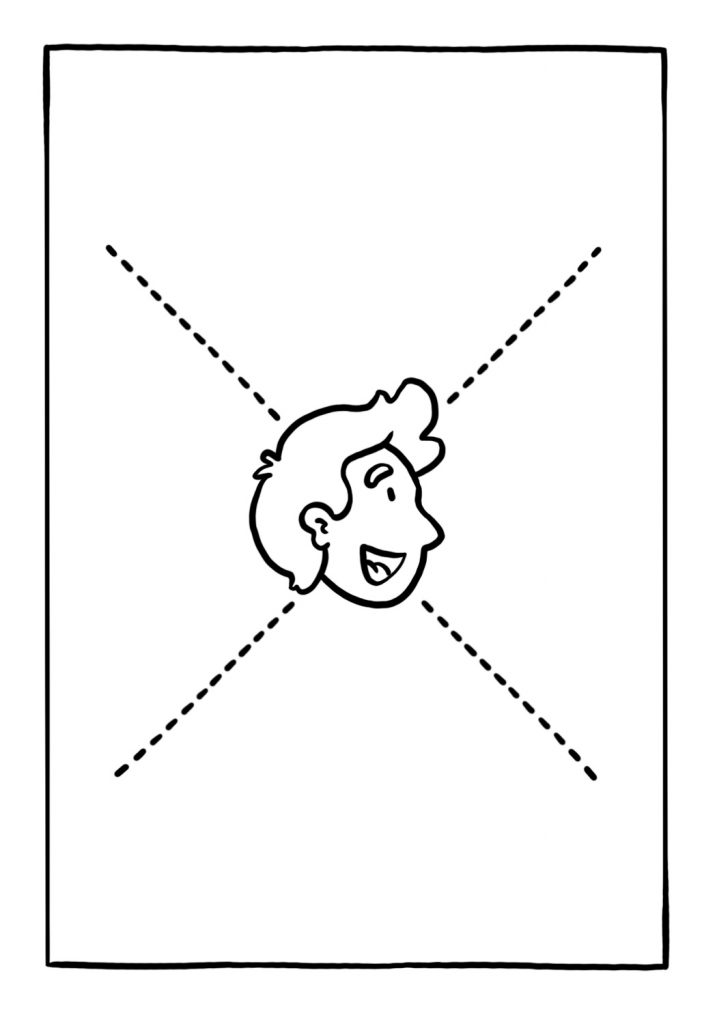
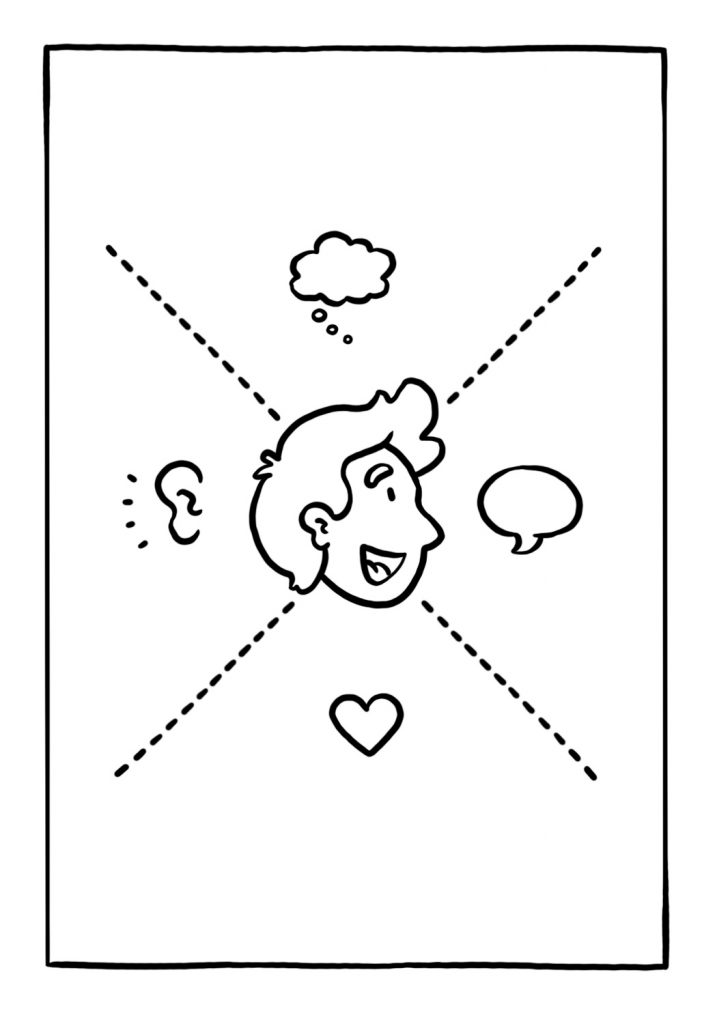
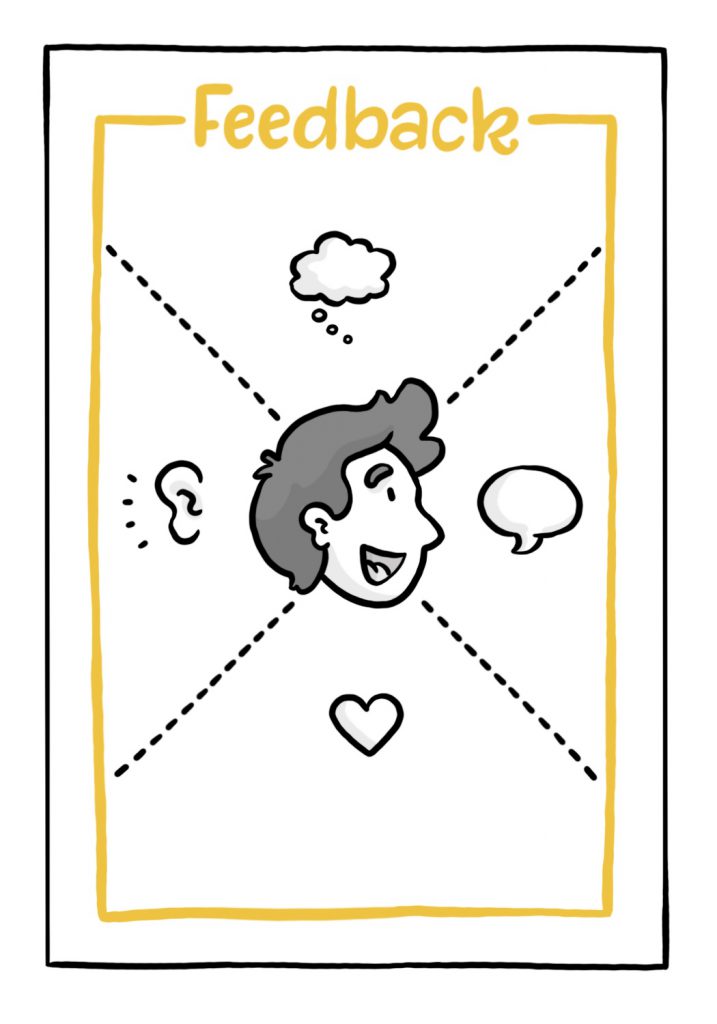
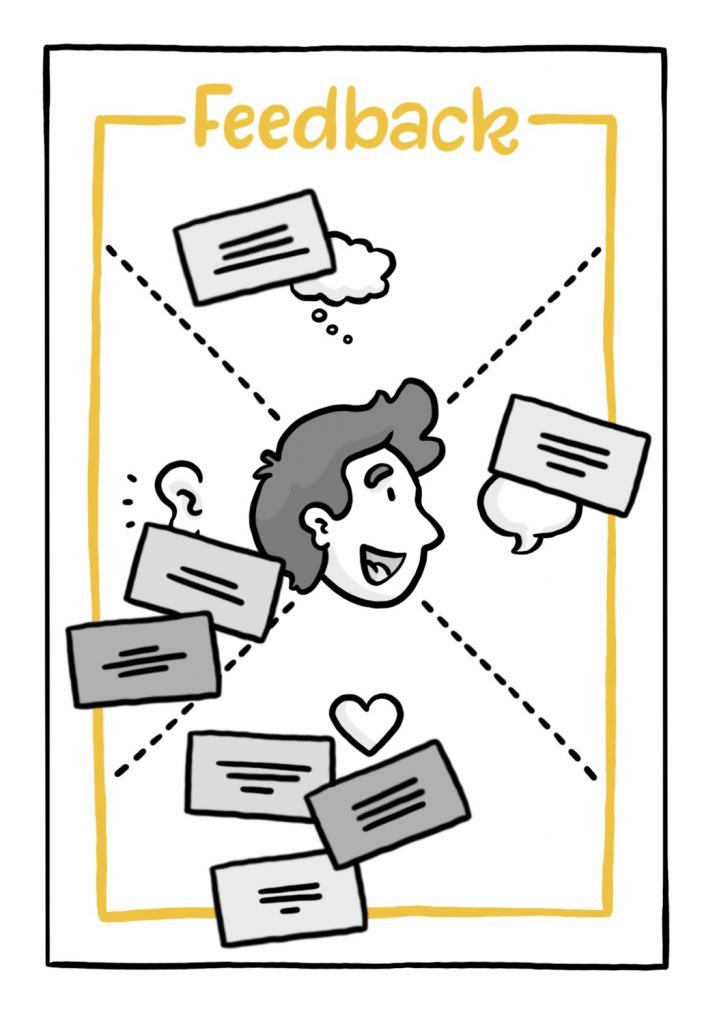
The tree with many facets
The tree is a great metaphor. It can also be used for feedback. Here, the following questions can be discussed based on the picture:
- Sun: What helped me?
- Cloud: What did not help?
- Fruit on the tree: What topics did we discuss?
- Basket: What do I personally take with me?
- Fallen fruit: What do I leave here?
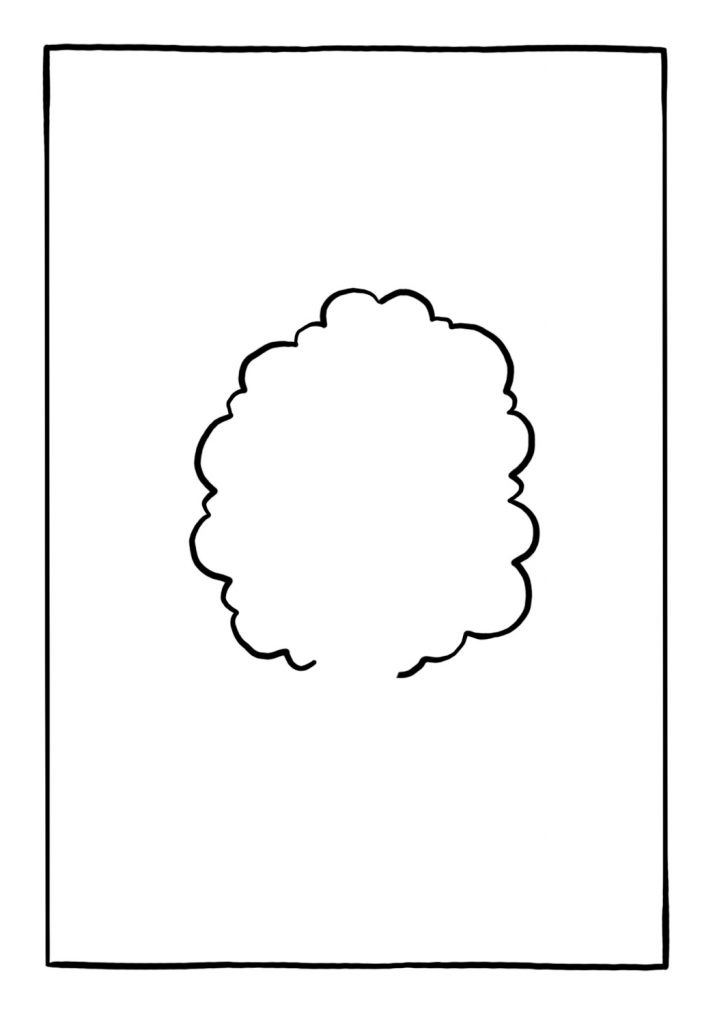
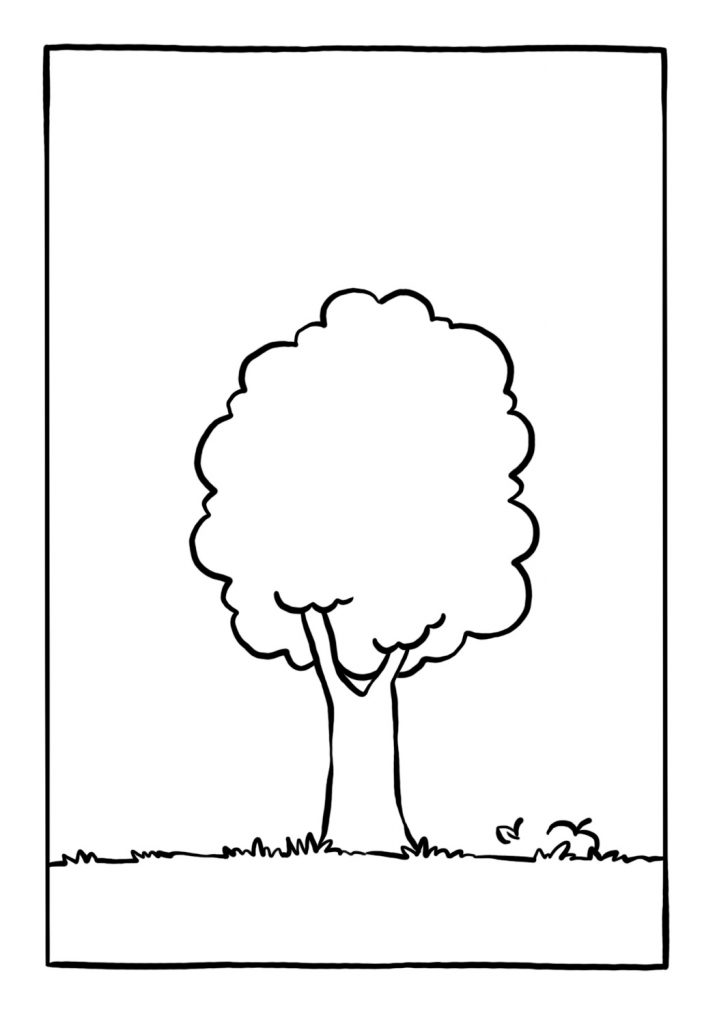
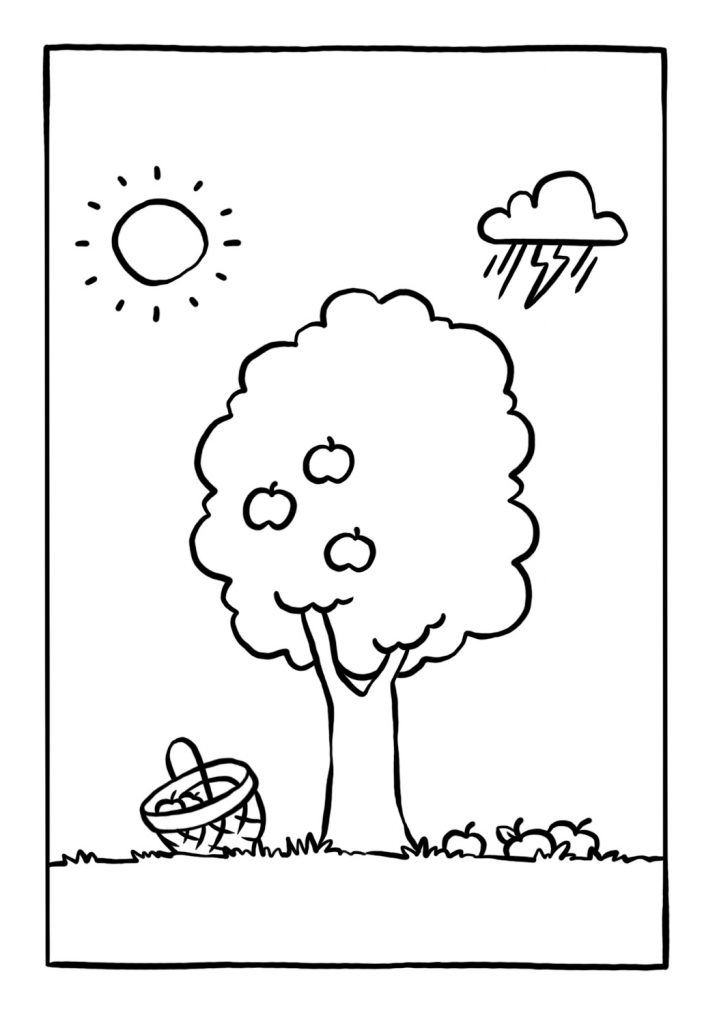
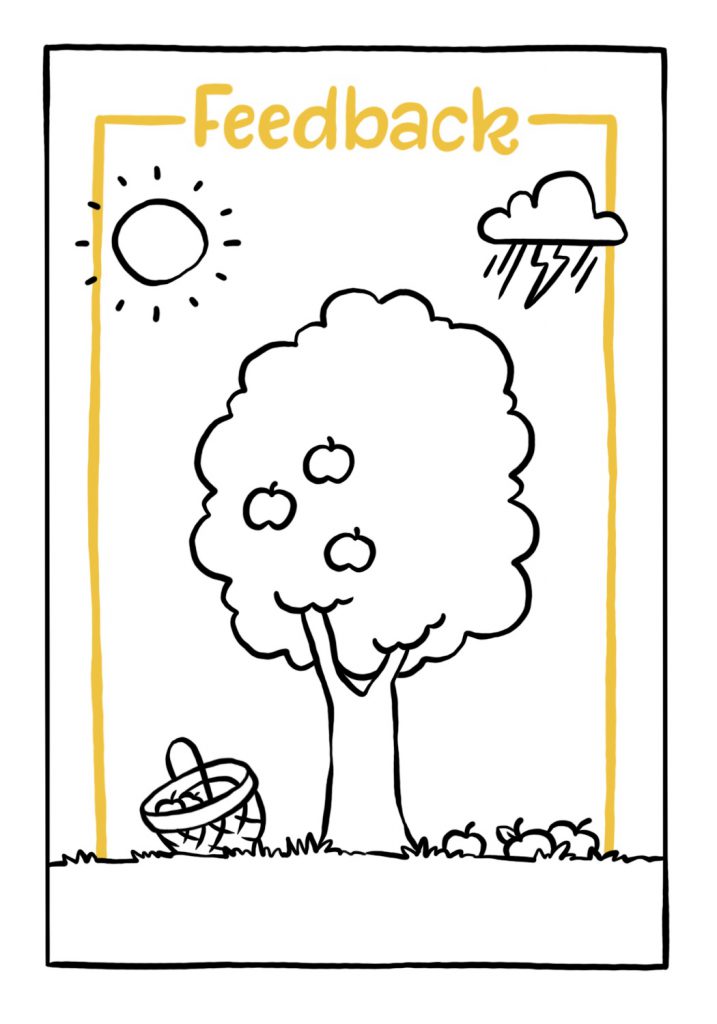
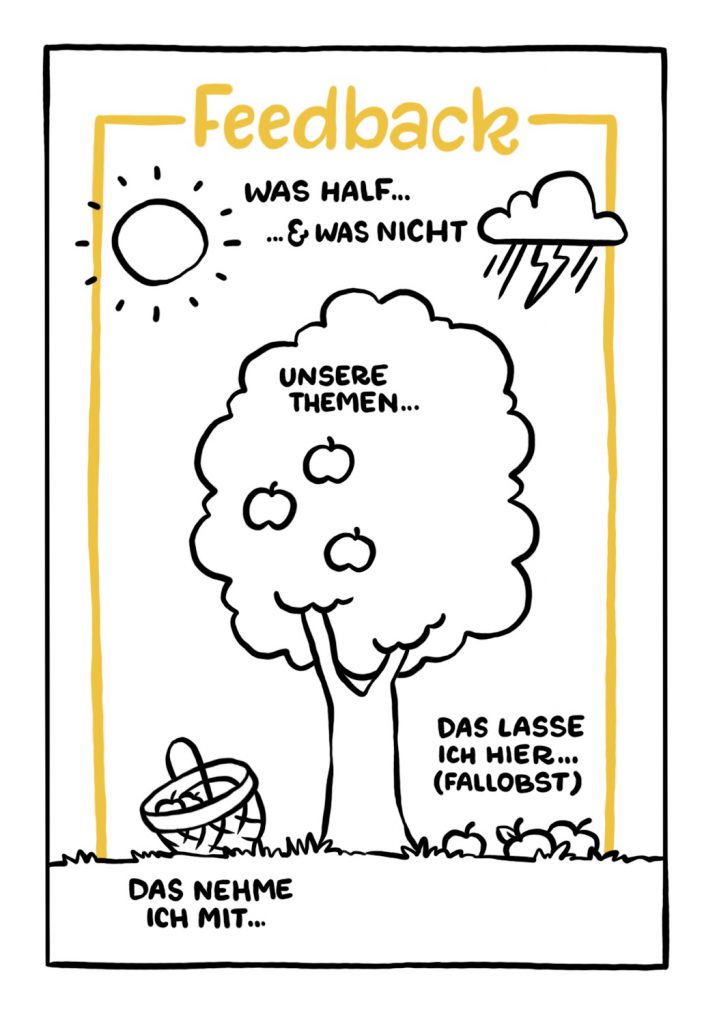
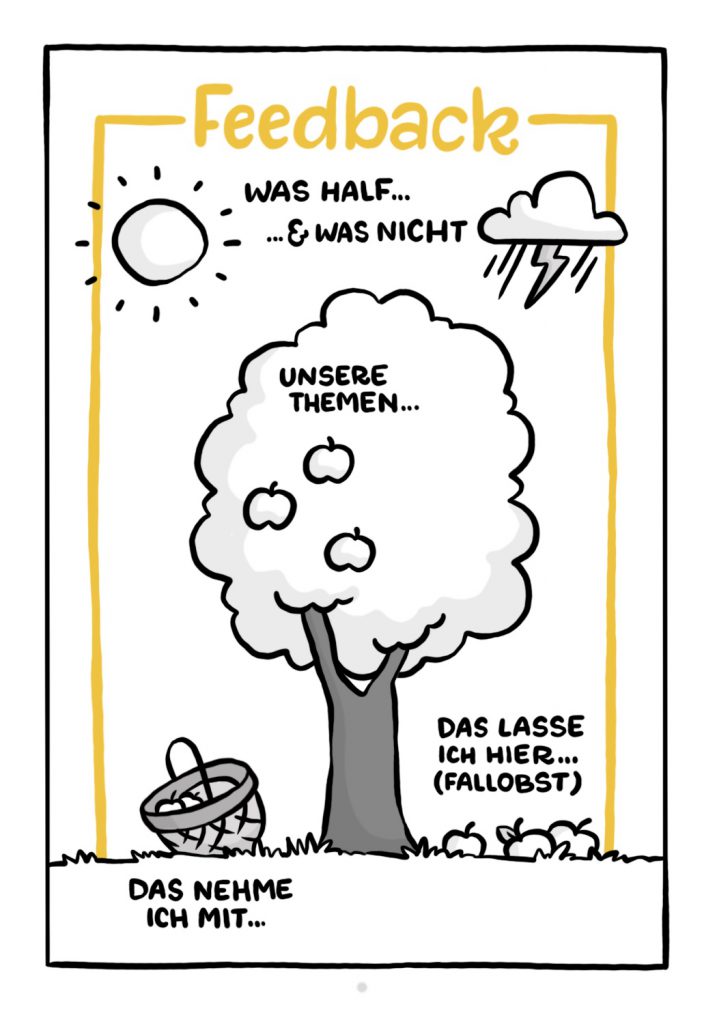
Do you have any questions about the templates shown or ideas on how to add to them? Are there any other templates you would like to use for feedback? I’d be delighted if you share your experiences in the comments 🙂
You can find more flipchart templates here:
Author: Lana Lauren
Translation: Astrid Donaubauer
Want more? You can find all the articles in the series HERE!

Dieses Werk ist lizenziert unter einer Creative Commons Namensnennung-NichtKommerziell-Weitergabe unter gleichen Bedingungen unter gleichen Bedingungen 3.0 Österreich Lizenz.
Volltext der Lizenz

